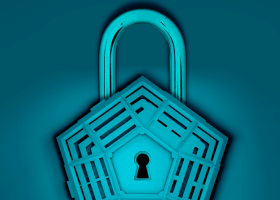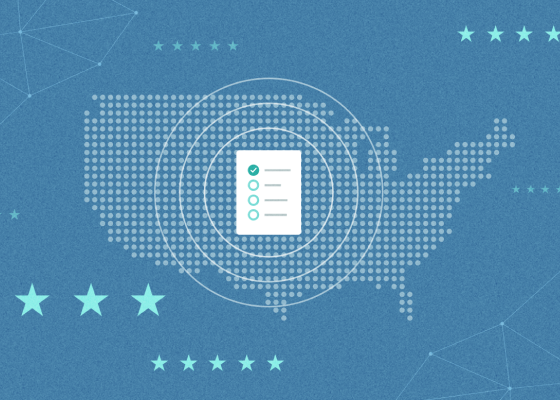Comprehensive Strategies for Effective CUI Protection Across All Digital and Physical Assets
Every federal contract carries a hidden risk: Data exposure.
Controlled Unclassified Information (CUI) now sits at the center of procurement decisions, audit readiness, and long-term vendor trust. Yet too often, it's treated as a background IT problem rather than a business-critical priority.
In reality, the ability to identify, govern, and demonstrate CUI data protection across environments has become a defining factor in contract performance and revenue continuity. Organizations engaging with federal agencies must address this holistically. Executives are expected to understand not just where CUI resides, but how effectively it is protected, audited, and governed.
This blog explores practical strategies for how to protect CUI from initial identification to policy enforcement. It provides a roadmap for aligning technical safeguards with business priorities, enabling scalable, cost-effective, and audit-ready CUI data protection.
Let’s jump in and learn:
- TL;DR: Effective CUI Protection for Digital & Physical Assets
- What Qualifies as Controlled Unclassified Information?
- Why CUI Protection Is a Strategic Business Imperative
- Steps to Identify Controlled Unclassified Information
- How to Protect the Confidentiality of CUI?
- Myths That Undermine Effective CUI Protection
- Conclusion
- Frequently Asked Questions:
TL;DR: Effective CUI Protection for Digital & Physical Assets
- CUI requires structured protection under federal mandates, even though it is not classified.
- Failing to protect CUI can result in contract loss, failed audits, and regulatory exposure.
- Identification and classification of CUI must be the first step in any protection strategy.
- Compliance with CMMC and NIST frameworks demands layered technical and procedural safeguards.
- Myths about labeling, storage, and cloud use often lead to critical oversights.
What Qualifies as Controlled Unclassified Information?
Controlled Unclassified Information refers to federal data that is sensitive but not classified. This information is created by, or on behalf of, the government and is not intended for public release. CUI protection applies to any system or environment where this data is processed, stored, or transmitted.
Examples of CUI include:
- Internal contract deliverables
- Engineering blueprints and technical documentation
- Project schedules, system logs, or compliance reports
- Research data governed by export controls
- Sensitive test results or configuration files
This type of data may not carry a "classified" label, but the CUI protection requirements are formalized through federal regulations and must be addressed at the enterprise level.
Why CUI Protection Is a Strategic Business Imperative
While CUI does not fall under classified information protocols, it is governed by standards such as NIST SP 800-171 and enforced under frameworks like CMMC. For organizations engaged in federal work, protecting CUI data is tied directly to operational continuity and eligibility for future contracts. However, many companies struggle to answer a basic question: How do you protect CUI when it exists across disconnected systems, shared repositories, or legacy tools?
Understanding what qualifies as CUI determines:
- The scope of compliance obligations
- The resources required for audit readiness
- The risks tied to exposure or mismanagement
- The investment needed in data governance and security architecture
Key compliance points include:
- CMMC Level 2 applies to contractors who manage CUI and includes 110 security controls.
- These controls focus on access restrictions, encryption, monitoring, and incident response.
- CUI data protection must extend across physical, digital, and hybrid infrastructure.
Failing to meet these requirements can result in failed audits, contract disqualification, and reputational damage.
Steps to Identify Controlled Unclassified Information
Many organizations fail to protect CUI not because they lack controls, but because they cannot accurately locate or classify the data.
Here are the steps to institutionalize CUI discovery:
- Operationalize CUI Identification
Work with business unit leaders to understand which processes generate or receive government-regulated data. Focus on contracts, supply chains, engineering documentation, bid proposals, and inter-agency communications.
- Use Centralized Discovery Tools
Invest in platforms that scan across cloud repositories, emails, file systems, and collaboration platforms. Tools like Egnyte support automated classification using rule-based detection aligned with the NARA CUI Registry.
- Tag, Label, and Apply Metadata
Once identified, apply machine-readable tags. This facilitates downstream access controls, encryption, and auditability.
- Map CUI Locations to Access Roles
Every CUI asset should have a defined owner and a documented set of access roles. This ensures accountability and simplifies audit trails.
Accurate discovery is not just a compliance step. It reduces the scope of remediation, enables targeted investment, and limits overprotection (which inflates security costs unnecessarily).
How to Protect the Confidentiality of CUI?
Protecting CUI is a layered process. No single technology solves the problem. Organizations need an integrated framework that combines policy, tooling, and operational discipline.
- Access Controls: Enforce least-privilege access. Tie roles to job functions, not departments. Avoid blanket permissions or shared credentials.
- Authentication Protocols: Deploy multifactor authentication (MFA) and periodic credential rotation.
- Encryption Standards: Encrypt CUI both in transit and at rest. Choose solutions that meet FIPS 140-2 standards.
- Activity Monitoring: Implement real-time anomaly detection and audit logs for every system that touches CUI.
- Data Backup and Recovery: Maintain secure, air-gapped backups with routine restoration drills.
- Endpoint Protection: Ensure all user devices have threat detection, patch management, and secure configuration baselines.
- Physical Security: Control physical access to data centers, file rooms, and any off-site storage handling CUI.
Myths That Undermine Effective CUI Protection
Misconceptions about CUI create gaps in enterprise compliance and increase operational risk.
Conclusion
CUI protection is no longer the sole responsibility of the IT department. It is a cross-functional issue that intersects with revenue, operations, procurement, legal, and security.
Organizations that treat CUI protection as a strategic initiative, rather than a tactical fix, are better positioned to win long-term contracts, pass audits with confidence, and maintain a low risk profile in an increasingly regulated environment.
Egnyte enables this enterprise-level discipline. Egnyte’s governance platform brings structure to CUI protection by offering discovery, classification, permission enforcement, and real-time monitoring across hybrid environments. It aligns directly with the technical and policy requirements of CMMC Level 2 and NIST 800-171, helping organizations reduce audit fatigue, maintain trust with federal partners, and demonstrate consistent data stewardship at scale.
Frequently Asked Questions:
Q. What is not considered Controlled Unclassified Information (CUI)?
Public-facing content, such as agency press releases, published research, or data accessible under the Freedom of Information Act, is not CUI. However, when in doubt, refer to the NARA CUI Registry.
Q. Who is responsible for protecting CUI?
Responsibility lies with the prime contractor and any subcontractor who creates, processes, stores, or transmits CUI under the terms of a federal contract.
Q. How does Egnyte help organizations protect and manage CUI securely?
Egnyte offers automated classification, access control enforcement, real-time monitoring, and compliance reporting. It integrates across cloud, on-premises, and hybrid environments, aligning with NIST and CMMC requirements.
Q. How can organizations ensure compliance with CUI regulations?
Establish a governance framework with written policies, use validated security tools, conduct regular internal audits, and ensure employee training is aligned with contract obligations.
Q. What are the risks of not protecting CUI properly?
Risks include disqualification from contracts, breach-related fines, reputational loss, loss of market share, and regulatory penalties. Mishandling CUI also increases exposure to insider threats and third-party risk.
Additional Resources

Controlled Unclassified Information (CUI) - What You Need to Know
Learn what CUI means, why it matters for DoD contractors, and how Egnyte can help you ...

CUI Risk Analysis: Find & Secure Sensitive Data
Quickly find and assess your CUI exposure.

CMMC Requirements: What You Need to Comply
Understand CMMC levels, requirements and compliance standards for DoD contractors.